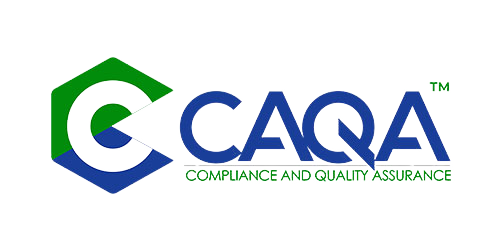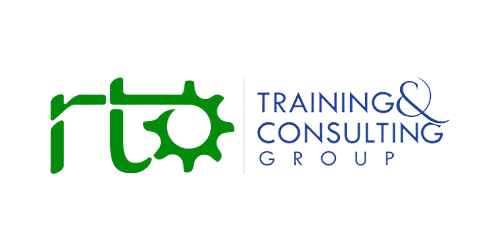The Australian Skills Quality Authority (ASQA) plays a vital role as the national regulator for Australia’s vocational education and training (VET) sector. Tasked with upholding quality standards across registered training organisations (RTOs), ASQA holds significant influence over the future of vocational training and the livelihoods of education providers. But is the regulator overstepping its bounds? Recent cases and complaints suggest ASQA may, at times, exceed its statutory mandate, raising concerns about whether its actions are undermining the very sector it aims to protect.
The Framework That Drives ASQA
ASQA operates under a series of key legislative and regulatory frameworks:
1️⃣ NVR Act 2011 – Governs registration, compliance, and enforcement for RTOs.
2️⃣ Standards for RTOs 2015 – Ensures training quality, assessment practices, and good governance.
3️⃣ Privacy Act 1988 – Protects personal information collected during audits.
4️⃣ Freedom of Information Act 1982 (FOI Act) – Promotes transparency in regulatory processes.
The Regulatory Framework and Its Boundaries
ASQA operates under the National Vocational Education and Training Regulator Act 2011, with a mandate to maintain the quality and integrity of Australia's VET sector. This includes ensuring RTOs comply with the Standards for Registered Training Organisations 2015. These frameworks establish ASQA's legitimate authority but also impose boundaries on how that authority should be exercised.
The regulatory principles governing bodies like ASQA typically require that enforcement actions be:
-
Proportionate to the risk posed
-
Consistent in application
-
Transparent in the process
-
Accountable to stakeholders
-
Targeted at the problem rather than being excessive in scope
When regulatory bodies operate beyond these principles, they risk creating environments where compliance becomes less about quality assurance and more about navigating an unpredictable bureaucracy. The consequences can be far-reaching, affecting not only individual providers but the integrity of the entire VET system.
Documented Concerns: Patterns of Regulatory Overreach
Recent legal proceedings before the Administrative Review Tribunal have documented concerning patterns of regulatory behaviour that merit serious examination. These include allegations of targeted harassment against specific consulting firms, conflicts of interest, and procedural unfairness that reflect broader concerns about regulatory overreach.
Privacy and Personal Information
ASQA created detailed "relationship maps" containing sensitive private information, such as dates of birth, residential addresses, and family connections, not only of consultants but also of unrelated individuals. This collection and dissemination of information lacked a lawful basis, raising serious privacy and ethical concerns. These actions appear to violate several provisions under the Australian Privacy Principles (APPs):
APP 3.3: Unlawful Collection of Sensitive Information
Under APP 3.3, sensitive information, including family ties, can only be collected with explicit consent or under a legal requirement. ASQA’s Privacy Policy permits data collection for regulatory purposes, such as processing complaints or applications. However, compiling extensive personal details of individuals unrelated to ASQA’s regulatory functions, such as family members of consultants, exceeds this scope. No evidence suggests consent was obtained or a lawful basis existed for this data aggregation. The OAIC’s guidelines explicitly prohibit such overreach, emphasising that sensitive information collection must be strictly necessary and proportionate to regulatory duties.
APP 6.1: Misuse of Personal Information
Circulating these relationship maps in contexts unrelated to ASQA’s oversight duties, such as undermining consultants' reputations, violates APP 6.1. This principle restricts data use to the “primary purpose” of collection (e.g., auditing providers) or secondary purposes reasonably expected by the individual. ASQA’s policy allows sharing information with authorities under the National Vocational Education and Training Regulator Act 2011, but using personal data to target consultants’ clients or influence market dynamics falls outside lawful parameters. The OAIC stresses that disclosures must align with public expectations of fairness, which ASQA’s actions reportedly disregarded.
APP 11.1: Failure to Secure Data
Disseminating sensitive information to unauthorised parties further breaches APP 11.1, which mandates robust safeguards against misuse. While ASQA’s Privacy Policy claims it takes “reasonable steps” to protect data, circulating maps externally demonstrates a failure to prevent unauthorised access. This lapse mirrors high-profile breaches like Optus’ 2022 incident, which caused widespread psychological harm, a risk underscored here by reports of severe distress among affected families, including unrelated individuals.
Evidence of Harm and Systemic Issues
The unauthorised disclosure of personal details has led to documented psychological trauma, including anxiety and depression, among those named in the maps. Legal precedents, such as the OAIC’s 2022 ruling against a medical practice for emailing sensitive patient data, highlight the severe repercussions of privacy breaches, including compensation for non-economic harm. In ASQA’s case, the circulation of irrelevant personal information to damage professional reputations aligns with broader sector critiques of its “heavy-handed tactics.”
Systemically, ASQA’s actions reveal a lack of lawful basis for collecting data on unrelated individuals and a disregard for ethical boundaries. The APPs and ASQA’s own policies emphasise transparency and proportionality, yet the creation of these maps suggests a weaponisation of regulatory authority. Such practices not only breach privacy laws but also erode trust in public institutions, particularly when FOI requests related to these matters are routinely denied or redacted.
Evidence of harm caused by these practices reveals that family members of targeted consultants, including unrelated government employees with no involvement in the sector, experienced significant psychological distress due to the widespread dissemination of their private information. These maps contained not only irrelevant details of family members but also unrelated parties, including previous managers and employers, many of whom had no direct or indirect connection to the matters at hand.
The relationship maps were circulated on multiple occasions, often in situations that had no relevance to the consultants' clients or disputes. This appears to have been part of a larger effort by ASQA to undermine the business operations and professional reputation of consultants who were defending their clients. The deliberate misuse and overreach of personal information for unrelated purposes highlight serious breaches of trust and a concerning disregard for privacy and ethical boundaries. The psychological harm and reputational damage caused by these actions underscore the need for accountability and stricter oversight of such practices.
Anti-Competitive Conduct Allegations
Allegations have emerged that regulatory officers within Australia’s vocational education and training sector have overstepped their statutory mandate by intervening in the commercial relationships between Registered Training Organisations (RTOs) and consultancy firms. Legal documentation and sector reports describe instances where RTOs were directed, sometimes explicitly, sometimes by implication, to end their relationships with specific consultants, with the threat of negative audit outcomes if they failed to comply. In some cases, RTOs that severed these ties reportedly received immediate compliance benefits, even though their operational practices remained unchanged. This pattern suggests that regulatory attention was focused more on the presence or absence of particular business relationships than on genuine compliance with training standards.
Supporting these concerns are documented examples, including emails and audit meeting records, in which regulatory officers allegedly instructed RTOs to discontinue collaboration with certain consultants and, at times, recommended alternative businesses. Such interventions, if substantiated, raise serious questions about the impartiality of regulatory oversight and the potential misuse of regulatory power to influence market competition rather than address actual non-compliance. This not only undermines trust in the regulatory process but also risks distorting the competitive landscape within the sector.
The implications of these actions extend beyond individual RTOs and consultants. If regulatory powers are used to shape market dynamics or dictate business decisions, this constitutes a misuse of authority and threatens the integrity of the entire regulatory framework. Such practices could erode confidence among students, employers, and the broader community in the fairness and transparency of vocational education regulation.
These allegations also highlight potential breaches of several key Australian laws. Under the Competition and Consumer Act 2010 (Cth), pressuring RTOs to terminate contracts with certain consultancies could be seen as anti-competitive conduct, potentially violating Section 46 (misuse of market power) and Section 47 (exclusive dealing). Evidence includes cases where providers using “disfavored” consultancies received adverse findings, while those using “preferred” services did not, despite using identical materials.
Further, concerns about procedural fairness have arisen, with reports of auditors who had prior involvement in cases or other conflicts of interest participating in compliance assessments. This raises questions about the impartiality of the process and aligns with Federal Court findings that have identified failures in natural justice, such as withholding audit reports during registration renewals.
Additional allegations include the creation of unauthorised “relationship maps” containing sensitive personal information, which may breach the Criminal Code Act 1995 (Cth) (Sections 478.1 and 478.2), as well as the Privacy Act 1988, given the reported psychological harm and financial impact on affected individuals and families. Systematic obstruction of Freedom of Information (FOI) requests, affecting several RTOs and consultants and resulting in significant legal costs, suggests breaches of the FOI Act 1982.
Collectively, these issues point to systemic shortcomings in regulatory oversight, with potential breaches spanning privacy, transparency, procedural fairness, and competition law. Addressing these concerns will require comprehensive reform, including independent audits of regulatory compliance, greater separation between FOI and investigative functions, and robust accountability mechanisms to restore confidence in the sector’s governance and ensure regulatory actions are strictly aligned with legal and ethical standards.
Inconsistent Application of Standards
Another concerning pattern alleged in the documents relates to inconsistent regulatory outcomes. Legal submissions claim that "RTOs using identical training resources from certain consultancies received non-compliance findings, while other RTOs using resources from regulator-preferred providers were deemed compliant with identical standards."
Consistency is a fundamental principle of good regulatory practice. When similar cases receive dramatically different outcomes based on factors unrelated to compliance, it undermines confidence in the regulatory system and creates uncertainty for providers attempting to navigate compliance requirements.
Freedom of Information Obstacles
A 2023 FOI request for audit documents was denied despite targeting only 996 records, with ASQA claiming a "voluminous" workload.
The provided documentation reveals a deeply concerning trend of systematic obstruction regarding Freedom of Information (FOI) requests directed towards a regulatory body within the Vocational Education and Training (VET) sector. Over a documented three-year period, numerous FOI applications have been met with responses that effectively undermine the principles of transparency and accountability that the FOI Act is intended to uphold.
A primary tactic employed has been the outright refusal of access to requested information. This blanket denial prevents any public scrutiny of the regulator's operations, decisions, or internal processes. Such a practice raises serious questions about what information the regulator is actively seeking to conceal and why. It suggests a potential lack of willingness to be held accountable for its actions and a disregard for the public's right to access government-held information.
Furthermore, even when documents are provided, they are often rendered virtually useless due to extensive redactions. Entire sections of text are blacked out, leaving applicants with fragmented and incomprehensible information. This practice circumvents the spirit of the FOI Act, which aims to provide meaningful access to information, not merely the physical delivery of heavily censored documents. The level of redaction suggests a deliberate effort to obscure key details and prevent any genuine understanding of the issues under inquiry.
Another frequently cited reason for refusing or delaying FOI requests is the claim that processing them would require an "unreasonable diversion of resources." This justification is particularly troubling given instances where the requests were narrowly targeted, focusing on specific documents or timeframes. The invocation of this clause, especially in cases where the volume of requested material appears manageable (such as the documented case involving approximately 996 documents), suggests a potential strategy to deter FOI applicants rather than a genuine constraint on resources. It implies that the regulator may be prioritising the concealment of information over its obligation to facilitate public access.
Adding to these concerns is the disturbing revelation of a significant conflict of interest within the regulatory body. The documentation highlights instances where the same officers responsible for investigating complaints about the regulator's own conduct were also tasked with deciding which documents could be released under FOI provisions. This overlap in roles creates an inherent bias, as these officers have a vested interest in protecting the regulator from potentially damaging disclosures. The independence and objectivity crucial to both fair complaint handling and impartial FOI decision-making are fundamentally compromised when these responsibilities reside with the same individuals. This conflation of roles erodes public trust in the integrity of both the complaint resolution process and the FOI system.
The Freedom of Information Act is a cornerstone of democratic governance, designed to ensure that government operations are transparent and that regulatory bodies are accountable to the public they serve. When applied effectively, it acts as a vital mechanism for checks and balances on regulatory power. However, the patterns described in the recent legal proceedings paint a starkly different picture. The consistent obstruction of FOI requests, characterised by outright refusals, excessive redactions, and questionable claims of resource burden, strongly suggests a deliberate strategy to shield potentially improper conduct from public scrutiny. This undermines the fundamental principles of the FOI Act and raises serious concerns about the regulator's commitment to transparency and accountability.
The documented case of a 2023 FOI request for audit documents further illustrates this pattern. Despite the request targeting a seemingly manageable number of records (996 documents totalling approximately 6,972 pages), the regulator denied access, citing a "voluminous" workload. While the volume of documents can be a legitimate factor in assessing the feasibility of an FOI request, the consistent pattern of obstruction across multiple requests, including this instance, casts doubt on the sincerity of such claims. It begs the question of whether the regulator is genuinely overburdened or strategically using workload as a pretext to avoid disclosing potentially sensitive information contained within these audit documents.
The identified breaches—systematic obstruction of FOI requests and the conflict of interest arising from the same individuals acting as FOI decision-makers and complaint investigators—represent significant failures in regulatory governance. The reported 80% refusal rate for FOI requests between 2021 and 2024, often relying on excessive redactions and claims of "unreasonable diversion of resources," underscores the severity of this issue. These practices directly contravene the spirit and intent of key provisions within the FOI Act.
Section 11a of the Act mandates that agencies provide access to information unless disclosure would cause demonstrable harm to the public interest. The high refusal rate suggests a potential overreach in the application of these exemptions or a misinterpretation of what constitutes harm to the public interest. Similarly, Section 24 explicitly prohibits refusing requests solely based on workload unless processing would "substantially and unreasonably divert resources." The documented instances of denial for relatively limited requests raise questions about whether this threshold is being legitimately met. Furthermore, Section 26 places an obligation on agencies to assist applicants in refining their requests to facilitate access. The pattern of obstruction suggests a potential failure to actively engage with applicants to explore alternative ways to provide information within reasonable resource constraints.
The evidence, such as the denial of the 2023 FOI request for audit documents despite a seemingly manageable scope, provides concrete examples of the systemic issues at play. This documented case, along with the broader pattern of resistance to FOI requests, necessitates serious scrutiny of the regulator's practices and a re-evaluation of its commitment to the principles of transparency and accountability enshrined in the Freedom of Information Act. The implications of this documented resistance extend beyond individual FOI applicants, potentially hindering public understanding of the VET sector's regulation and undermining trust in the regulatory framework itself.
Broader Implications for the VET Sector
The concerns raised in recent legal proceedings point to potential systemic issues that could affect the broader VET sector in several ways:
Regulatory Chill and Innovation
When providers perceive that regulatory outcomes may be influenced by factors beyond objective compliance assessment, it can create a "regulatory chill" that discourages innovation. Training organisations may become risk-averse, focusing narrowly on perceived regulatory preferences rather than developing improved training approaches. This undermines the adaptive capacity of the VET sector at a time when rapid workforce transformation demands innovative training solutions.
Market Concentration Risks
If regulatory actions effectively favour certain service providers over others, it can lead to unhealthy market concentration in the consulting and support services that many RTOs rely upon. Reduced competition typically leads to higher costs and reduced service quality over time, ultimately affecting the affordability and quality of VET provision.
Trust and Transparency Deficit
Perhaps most significantly, allegations of inconsistent or targeted regulatory action undermine trust in the regulatory system itself. When providers lose confidence that they will be treated fairly and consistently, compliance becomes viewed as a game to be played rather than a genuine quality assurance measure. This fundamentally undermines the purpose of having a national regulator.
The Need for Enhanced Oversight
The allegations and documentation presented in recent tribunal proceedings suggest a need for enhanced oversight mechanisms for regulatory bodies. While regulators must have sufficient authority to enforce standards, that authority must be balanced with appropriate accountability measures.
Several potential reforms could address the concerns raised:
Independent Review Mechanisms
An independent review body specifically tasked with examining complaints about regulatory conduct could provide necessary oversight without undermining legitimate regulatory functions. Such a body would need sufficient authority to access unredacted documents and information about regulatory decision-making processes.
Transparency Requirements
Enhanced transparency requirements could mandate the publication of more detailed information about how compliance decisions are made, including the specific evidence relied upon and the reasoning process followed. This would make the inconsistent application of standards more visible and easier to challenge.
Proportionality Guidelines
Clear guidelines on proportionality in regulatory actions could help ensure that enforcement measures are appropriate to the level of risk identified. This would include limitations on what types of commercial relationships regulators can influence or direct.
Improved FOI Processes
Reform of FOI processes, specifically addressing patterns of obstruction, could enhance accountability. This might include automatic escalation of repeatedly refused requests to independent review, or presumptive release of certain categories of regulatory information. Most importantly, structural separation between complaint handling and FOI decision-making is essential to avoid conflicts of interest.
Balancing Regulation and Fairness
Effective regulation is essential for maintaining quality in Australia's VET sector. Substandard training harms students, employers, and ultimately the national economy. However, regulatory effectiveness depends not just on the authority to enforce standards, but on the perception and reality of fairness, consistency, and proportionality in how that authority is exercised.
The allegations raised in recent tribunal proceedings, if substantiated, would represent a significant departure from these principles. The documented patterns suggest what could be characterised as regulatory actions exceeding statutory authority and potentially veering into improper use of government power.
Even if specific allegations were to be contested, they highlight the need for robust safeguards and oversight mechanisms to ensure that regulatory bodies remain within their proper bounds. The power to regulate must never become the power to arbitrarily determine winners and losers in a market, or to target specific individuals or organisations for reasons unrelated to genuine compliance concerns.
Moving Forward: Reform and Restoration
Addressing concerns about regulatory overreach doesn't require dismantling necessary regulatory functions. Rather, it calls for targeted reforms that preserve legitimate regulatory authority while strengthening guardrails against its misuse.
Australia's VET sector faces significant challenges in meeting evolving workforce needs and adapting to technological change. A well-functioning, trusted regulatory system is essential to meeting these challenges. When providers can trust that compliance will be assessed fairly and consistently, they can focus their energies on delivering quality training rather than navigating regulatory uncertainty.
The path forward requires acknowledgement of the concerns raised, thorough investigation of specific allegations, and commitment to reforms that enhance accountability without undermining necessary regulation. Only then can the essential trust between regulator and regulated be restored and strengthened.
Australia's vocational education system deserves nothing less than regulatory excellence, where standards are maintained with rigour, but also with scrupulous fairness and respect for the boundaries of regulatory authority. The documentation examined in recent tribunal proceedings suggests there is significant work to be done to achieve that ideal.
The Role of Administrative Review
The Administrative Review Tribunal (formerly the Administrative Appeals Tribunal) plays a vital role in providing oversight and review of administrative decisions, including those made by regulatory bodies. However, the effectiveness of this review mechanism depends on several factors:
-
Accessibility: The cost and complexity of bringing matters before the tribunal can be prohibitive for many smaller providers.
-
Information asymmetry: Without access to the full range of documents and reasoning behind decisions through effective FOI processes, applicants may be at a significant disadvantage.
-
Resource imbalance: Government agencies typically have significantly greater resources to devote to tribunal proceedings than individual providers or small businesses.
Recent cases highlight both the importance of administrative review and its limitations. While the tribunal may find in favour of applicants in specific matters, broader concerns about regulatory conduct often require separate proceedings and face significant obstacles in terms of information access.
Conclusion
The relationship between the regulator and the regulated is inherently challenging. Regulators must maintain standards while those they regulate naturally seek to minimise compliance burden. However, this tension must exist within a framework of fairness, transparency, and proper process.
The documentation examined in recent tribunal proceedings raises significant questions about whether regulatory practices have, in some instances, exceeded the bounds of appropriate regulatory action. While a full assessment would require access to all relevant information - access that appears to have been systematically denied through FOI obstruction - the patterns described suggest cause for serious concern.
As Australia works to strengthen its VET sector to meet future workforce challenges, ensuring that regulatory bodies operate within appropriate bounds must be a priority. Regulatory overreach doesn't just harm individual providers; it undermines the adaptability, innovation, and trust necessary for a thriving vocational education system.
The path forward requires not just addressing specific allegations but building stronger guardrails against potential regulatory overreach. Only then can the crucial balance between necessary regulation and appropriate limits on government power be properly maintained.


































